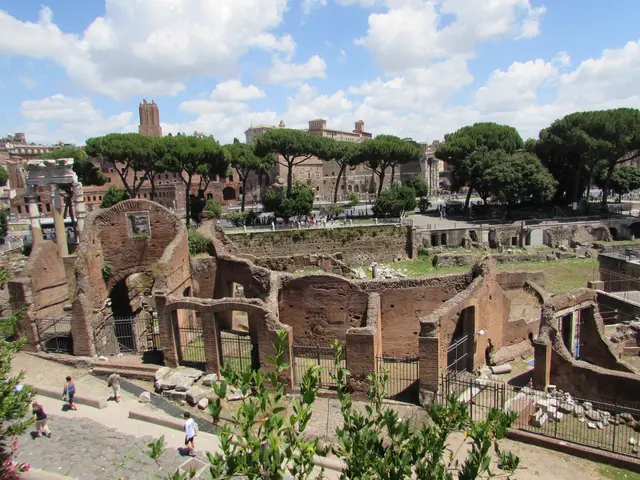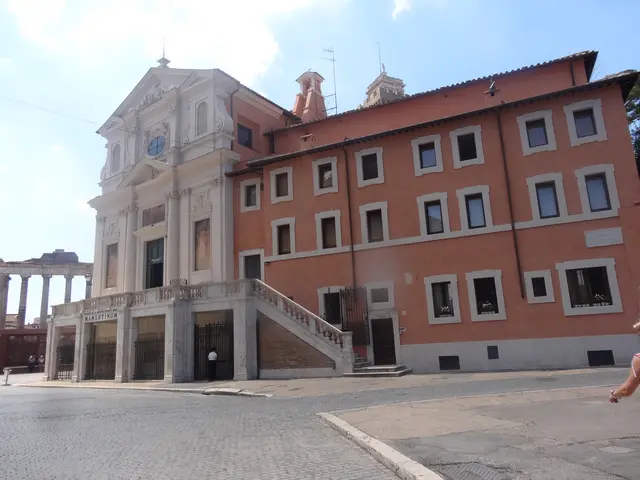Mamertine Prison
Introduction
The Mamertine Prison in Rome offers a unique window onto the city’s ancient history, standing at the crossroads of legend and reality. Built centuries before the Colosseum, the Mamertine’s dark chambers have witnessed the fates of vanquished kings, infamous traitors, and, according to tradition, Saint Peter himself. As we explore its layered past together, we’ll see how this Roman monument remains a powerful symbol of justice, redemption, and local tradition.
Historic Highlights
🏛️ Origins Beneath the Capitoline
The Mamertine Prison first rose in ancient Rome as a two-level structure: the lower Tullianum, carved from rock around a sacred spring, and the Carcer above. Archaeological finds suggest the site was used as a ritual well and meeting spot even before Rome’s legendary founding. By the 6th century BC, kings like Ancus Marcius and Servius Tullius were credited with converting it into Rome’s principal state prison.
“About twelve feet underground… enclosed by walls and a vaulted stone roof, foul with neglect, darkness and stench.”
— Sallust, The War with Catiline
⚖️ Stage of Power and Punishment
The Mamertine Prison became infamous during the Republic and Empire as the final stop for Rome’s most important captives. Unlike modern prisons, the Carcer wasn’t for long sentences; it was where political enemies awaited execution or judgment. Here, conspirators like those in the Catiline plot met their fate, while defeated kings, including Jugurtha of Numidia and Vercingetorix the Gaul, were lowered into the dark cell after triumphal processions. In 105 BC, Jugurtha famously quipped about the cell’s freezing chill.
“By Hercules, this is a cold bath you have here, O Romans!”
— According to Plutarch, spoken by Jugurtha in the Tullianum
⛪ From Dungeon to Sacred Shrine
In the Middle Ages, local legend transformed the Mamertine Prison into the site of Saint Peter and Saint Paul’s imprisonment. The spring in its depths was said to have miraculously appeared so Peter could baptize his guards. Pilgrims brought devotion to what became San Pietro in Carcere. The Carpenters’ Guild built a Baroque church above in the 17th century, fusing ancient stone and Christian reverence. Charles Dickens, visiting in 1845, was struck by the “oppressive” atmosphere and the macabre wall of murder weapons left by the penitent.
🛠️ Preservation and Renewal
Devotion and local pride helped preserve the Mamertine Prison while others crumbled or were quarried. Recent restorations (most recently after a dramatic ceiling collapse in 2018) have carefully balanced historical integrity with safety. Archaeologists have uncovered artifacts as old as 2,500 years, early medieval frescoes, and even bound skeletons in the oldest strata. Today, the Mamertine Prison welcomes all as both a museum and sacred site—its layers on full display for the curious and contemplative alike.
💡 Visitor Tip
Pair your Mamertine Prison visit with a stroll around the nearby Roman Forum. To fully appreciate the dungeon’s haunting ambiance, join a guided tour—they often include gripping stories you won’t find on placards.
Timeline & Context
Historical Timeline
- Late 9th–8th c. BC – Defensive wall and cultic spring established beneath Capitoline Hill.
- 7th–6th c. BC – Prison attributed to kings Ancus Marcius or Servius Tullius; Tullianum built.
- 4th–3rd c. BC – Upper chamber (Carcer) constructed; prison evolves into Rome's official state facility.
- 63 BC – Catilinarian conspirators executed; Sallust writes vivid account of Tullianum conditions.
- 105–46 BC – Notable prisoners such as Jugurtha and Vercingetorix held and executed.
- AD 21 – Prison restored under Tiberius; inscribed travertine façade added.
- 1st–4th c. AD – Used for high-status executions; legends of Apostles' imprisonment begin.
- 7th–8th c. AD – Christian worship established; site becomes San Pietro in Carcere.
- 1580s–1663 – Baroque church of San Giuseppe dei Falegnami constructed above prison.
- 2010–2016 – Excavations and restorations reveal ancient artifacts, frescoes, and human remains.
- 2018–2021 – Roof collapse and major restoration of church; site reopens to the public.
Origins, Architecture, and Function
The Mamertine Prison stands as Rome’s earliest known carceral monument, its physical evolution mirroring shifts in society, engineering, and belief. Excavations confirm a far older origin than tradition credits—predating Rome’s founding with cult uses centered on a sacred spring. The lower Tullianum’s beehive-shaped chamber, carved from bedrock and accessed only through the roof, testifies to archaic engineering skills. Its subsequent adaptation for detention highlights the Roman practice of repurposing sites for evolving civic needs. By the late Republic, the upper Carcer was added—built of robust peperino blocks and, eventually, monumentalized with inscriptions during the Empire.
Role in Roman Statecraft
The prison’s function in antiquity was highly symbolic. Unlike modern penitentiaries, it was never meant for lengthy stays or reform; instead, it provided a grim threshold before execution, mostly for Rome’s most prominent foes. Its presence adjacent to the Forum—a daily reminder that the state could swiftly condemn or pardon—contributed to its mythic status. Primary accounts, especially Sallust’s, emphasize neglect and filth not as happenstance, but as deliberate instruments of terror and humiliation, designed to deter treason at the heart of political life.
Religious Transformation and Medieval Layers
As Christianity rose, both textual traditions and the living spring below encouraged the reinterpretation of the Mamertine as a sacred site. By the 7th–8th centuries, the cell associated with St. Peter’s miraculous baptism of his jailers rivaled its punitive past. This conversion from a space of fear to a place of hope reflects broader adaptations of pre-Christian structures to new religious narratives. The ongoing devotion of Rome’s confraternities and guilds, particularly the Carpenters, enabled maintenance and the preservation of both pagan and Christian heritage through turbulent times, including the addition of medieval frescoes and the construction of a Baroque chapel above.
Preservation, Restoration, and Comparative Significance
The Mamertine Prison’s exceptional conservation owes much to its layered spiritual status and the ongoing engagement of religious and civic communities. While utilitarian carceral sites like the Lautumiae vanished, Mamertine endured. Its comparison with Castel Sant’Angelo—another monument transformed from ancient tomb to fortress and prison—reveals a continuum of incarceration practices in Rome. Both sites illustrate society’s urge to monumentalize both punishment and redemption, adapting architecture to reinforce changing political and religious values. Modern excavations and structural interventions have illuminated the continued risks posed by environmental factors, but also demonstrate contemporary commitment to safeguarding this cross-temporal landmark.
Historical Debates and Methodological Notes
The history of Mamertine is clouded by both legend and the limitations of ancient sources. While its association with Saint Peter is powerful for Christian tradition, there is scant early textual evidence to confirm his imprisonment there, as established by the critical analysis in the Catholic Encyclopedia. Nevertheless, archaeological finds—such as ancient cult vessels, early Christian graffiti, and medieval ex-voto offerings—attest to a continuous chain of meaning and memory. Scholars have relied on a careful balance of literary sources, epigraphy, and archaeological layers, always mindful of the rhetorical strategies employed by ancient writers and the shifting priorities of later custodians.
Cultural Impact and Ongoing Relevance
The Mamertine Prison’s story is woven into the Roman and Christian imagination alike—a palimpsest of brutality, faith, and redemption. It is invoked both in lighthearted local quips and in solemn spiritual rituals. Its recent technological interventions—structural reinforcement, digital surveys, conservation of frescoes—demonstrate the living nature of heritage stewardship. The prison stands today not simply as a relic, but as a space that continues to engage issues of memory, justice, and the value of preservation amidst the pressures of a modern city.



